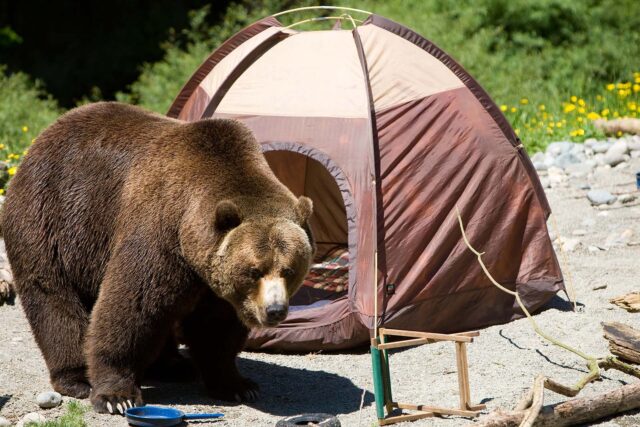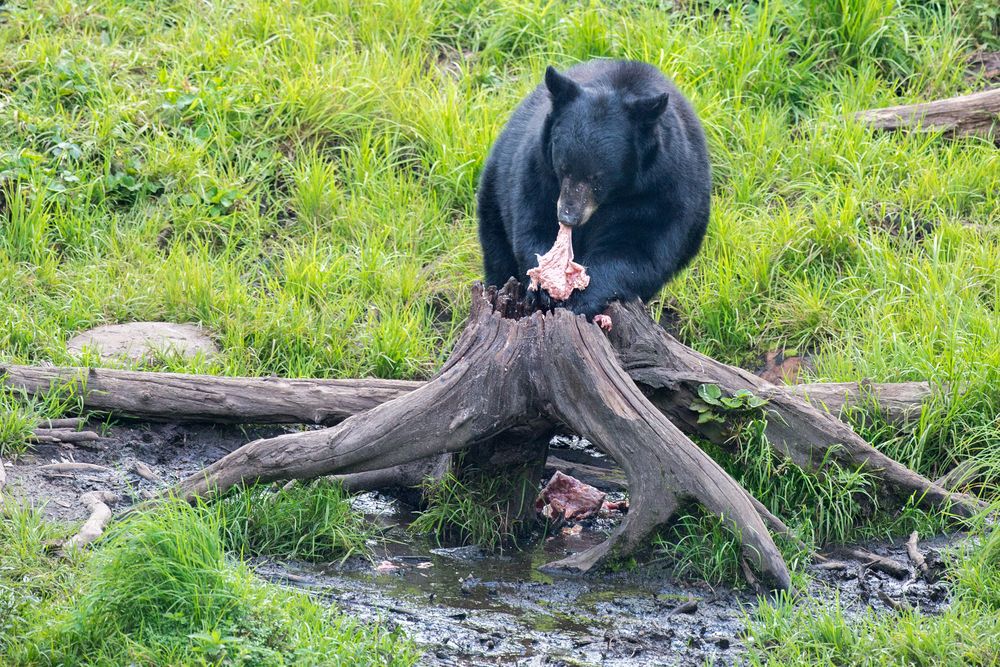
Backpacking has become a convenient and cost-effective travel option for young travel lovers all over the world. Backpacking involves small packages, typically a backpack, to fit in all the requirements of travel, i.e., tents, clothing, etc.
The stay and travel are cheap as compared to luxury tour packages. Low-budget hotels, motels, and traveling using public transport or walking on foot are the typical choices that backpackers often make. Hiking and visiting natural trails are common favorites of backpackers. They love the adventure, the thrill, and the rawness of nature.
However, traveling on foot and in areas where encounters with wild animals like leopards, tigers, etc., is a possibility, safety precautions are of paramount importance. Hence safety measures like bear canisters for backpacking are becoming common among travelers.
Why Are Bears Known As The Most Ferocious Creatures?
The world has several varieties of bears: grizzly bears, brown bears, sloth bears, etc. Each of them has some peculiar characteristics, but most are extremely curious and intelligent creatures. Thus travelers have to keep finding newer ways to keep them at bay. Some of them, like the giant grizzly, polar or brown bears, can weigh more than 500 pounds. Also, these animals usually stand up on two feet and can be almost six to seven feet tall.
They are excellent hunters and can climb trees, and are good swimmers. Hence climbing trees or jumping into a stream is futile when confronted with an aggressive bear. They have extremely strong jaws and long nails, making them all scarier. Hence, it is best to avoid these beasts by not attracting their attention. Most of these creatures are omnivorous, meaning they consume both vegetarian food like plant shoots and leaves and a non-vegetarian diet like other animals, including humans.

All hunters use their sense organs to locate their prey. Some have strong eyesight; others have a strong sense of smell. Bears have a strong sense of smell; hence, hikers have to be very careful in ensuring that the food they carry in their backpacks does not reach the bears.
3 Tips On How To Keep Bears Away
Plan The Trip After Proper Research
Most of the national parks that have bears, like national parks in Alaska and Wyoming, have proper guidelines which tourists are expected to follow for their own safety. The guidelines give details about animal behavior. Hence, hikers should know that these animals are active during dawn and dusk. They usually wake up slightly before sunrise and hunt for an hour or two after sunset. Hence it is better to avoid traveling on foot.
Also, bears usually hibernate during the winter months and are active during the July to August period. Also, it is a good idea to travel in groups of four or five. A large number of people are less likely to be attacked than a solitary hiker.
It might also be a good idea to make some sounds while moving in groups like clapping etc. However, this has to be done very carefully. Some sounds might irritate animals; also, some sounds might resemble cries of animals for help or mating. In such cases, these sounds could become disastrous as they will attract the attention of the animals instead of diverting them.
Thus, reading about animal behavior patterns and planning the trip accordingly can go a long way in preventing unfortunate attacks and loss of lives.
Preventing The Smell From Reaching The Animal

If people are careful while cooking food or eating food, then animal attention can be avoided. For instance, the utensils used for cooking should be washed carefully as the smell of the cooked food can persist long after the food has been consumed. Bears having a strong sense of smell will easily be able to sniff out the smell of food from used vessels unless they have been cleaned carefully.
It is also a good idea to remove and wash the clothes that have been worn while cooking. Cloth fibers can retain the smell of food for a long time; hence washing the clothes can stop the smell of food from reaching the bears. It is also advisable to dispose of the food waste carefully as it can also be used as clues to locate the source of the food.
It is also advisable to store the food at some distance from the main camp and add a GPS tracker to it. Thus, the animal will not enter the camps even if it gets a hint about the food.
Protecting The Food
Travelers have tried several things to protect their food. Earlier hikers used to tie two food items of equal weight at a height across a tree, like a pulley. However, animals are intelligent creatures, and bears were eventually able to snap the rope used for hanging the food.
Presently bear cans are the best option to protect food. These cans are hard and durable. They are made of solid metals and come with a strong lock and key system for opening. They might be such that it requires opposable fingers for opening, which bears lack, or they might require a key for unlocking.

These can carry food stocks and water for three to five days. It is important to learn how to pack these cans for optimum storage. These cans are available in a variety of sizes, and they have been quite helpful in keeping the food safe from bear attacks. In fact, most national parks require travelers to carry these cans if they wish to enter the national park.
Conclusion
The present generation loves backpacking because it gives a sense of adventure that is quite affordable. It also develops key skills like planning and living on a budget. Backpackers need to learn budget management, negotiation skills, adaptability, and of course, safety from wild animals if they are to have a safe and enjoyable trip. Thus, giving a reasonable amount of time to reading and researching about a destination is key to having a successful backpacking experience.








